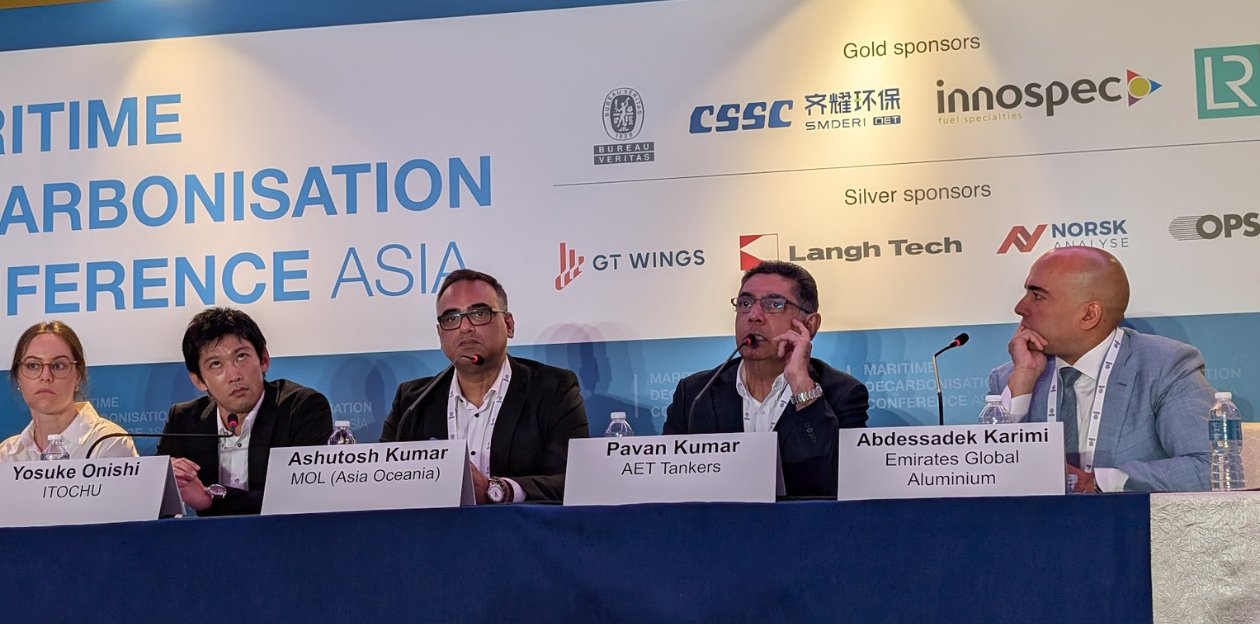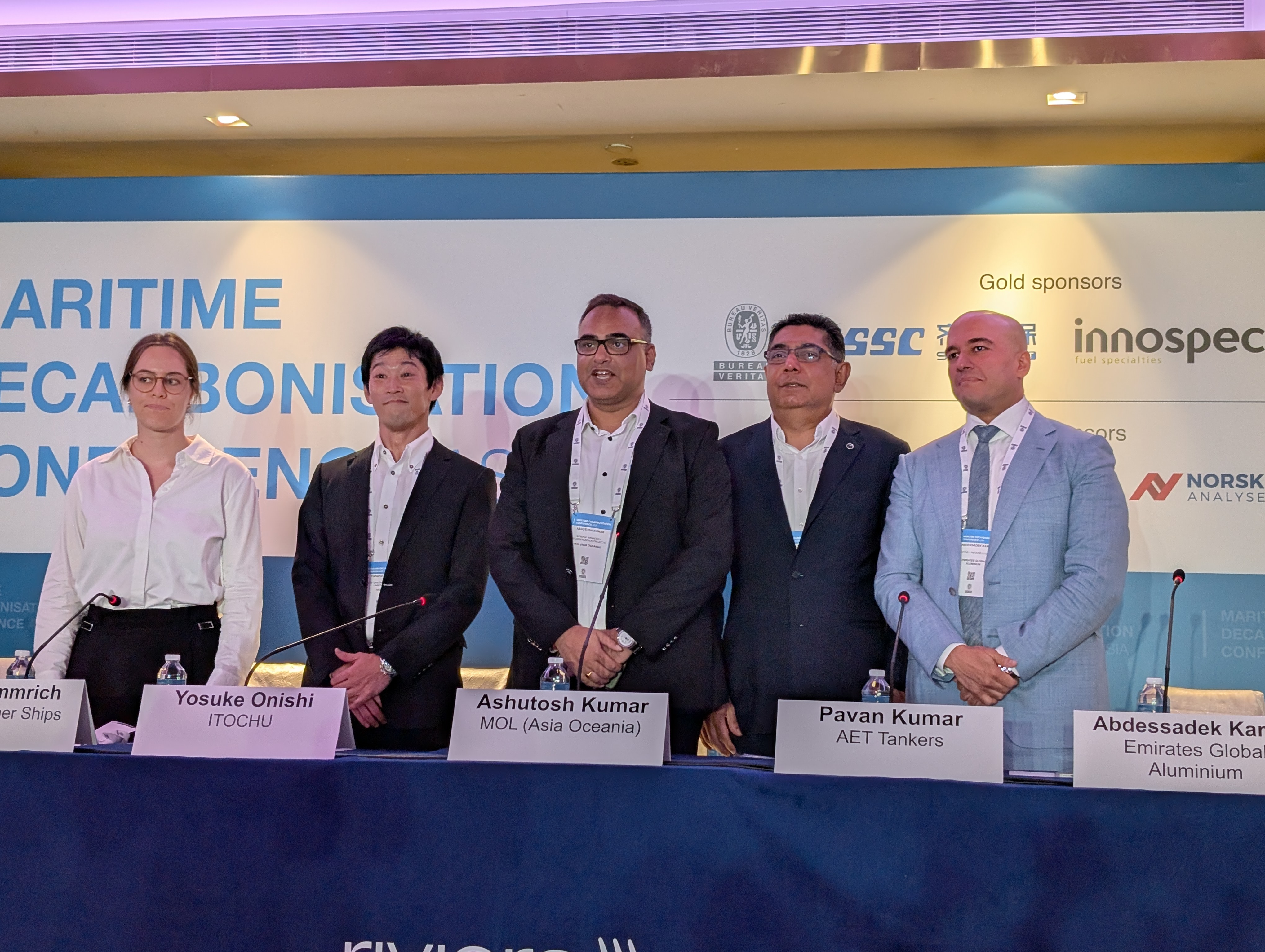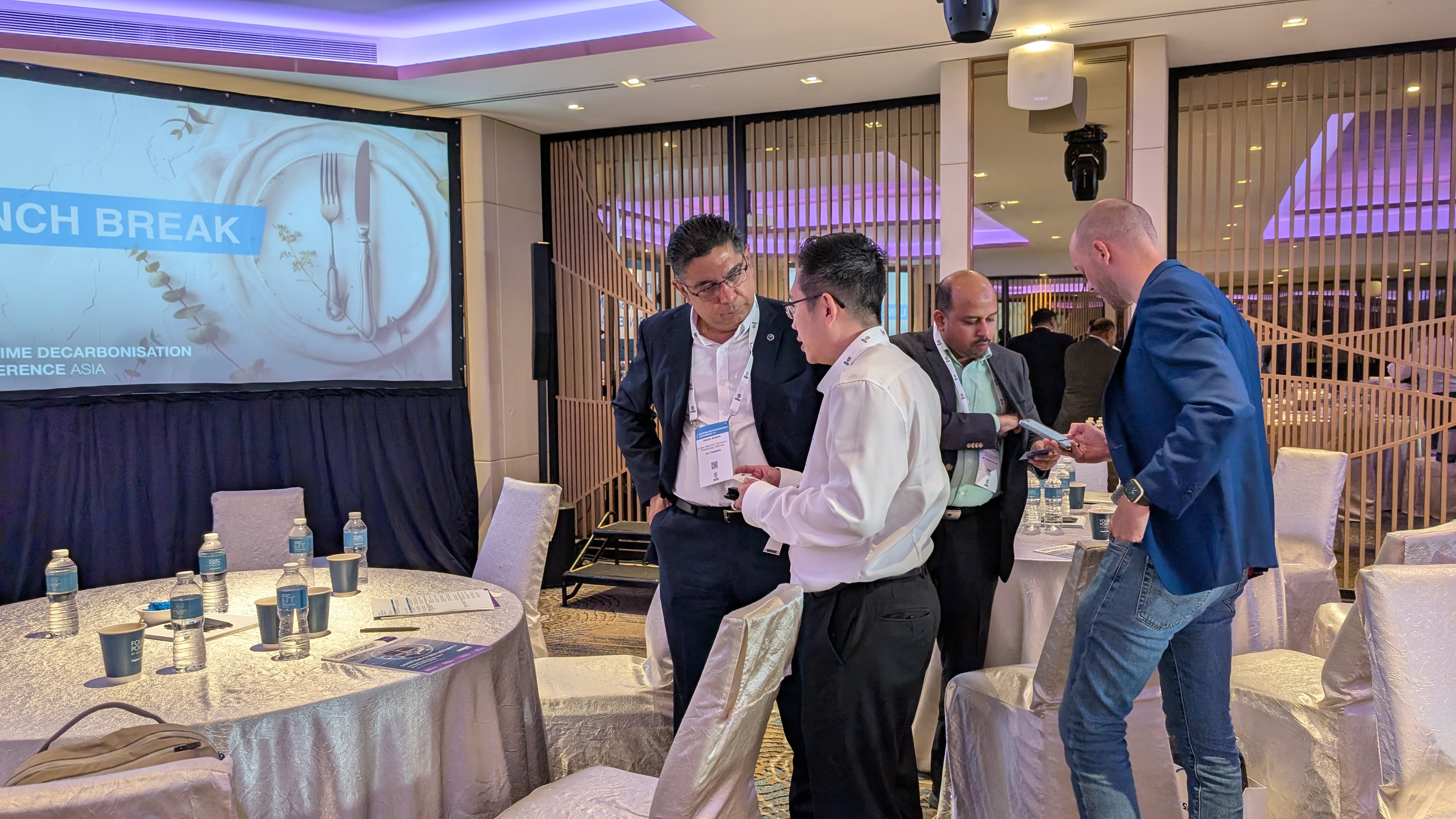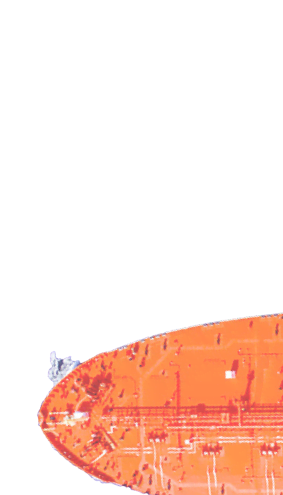Capt Pavan Kumar with fellow panellists at the 2025 Maritime Decarbonisation Conference Asia
AET is continuing to be part of conversations within the maritime sector as it comes under growing pressure to decarbonise. Conversations about how to get there are gaining momentum, with a stronger focus on practical change.
At the recent Maritime Decarbonisation Conference Asia, held in Singapore just days after the IMO endorsed the world’s first global carbon pricing plan for the industry, our Global Director of Technical – Operations, HSSE and Decarbonisation, Capt Pavan Kumar a/l Shivan Ditta, joined speakers from MPC Container Ships, ITOCHU, MOL and Emirates Global Aluminium on session titled “Net Zero Plans, Pathways and Challenges”.
The panel dug into some of the key issues facing shipowners and charterers: keeping up with new regulations, managing the costs of transition, and making strategic calls about technology, investment, and partnerships.
Drawing from AET’s own experience in deploying dual-fuel vessels and planning for future fuels, Capt Pavan highlighted two key drivers: clear regulations and strong partnerships.

Capt Pavan Kumar speaking on decarbonisation strategies at the Maritime Decarbonisation Conference Asia.
“Regulations will play a pivotal role in shaping how we move forward – but the real question is who pays for what,” he noted. “Retrofits, biofuels, carbon capture – all come with significant capital expenditure. If we want to build a resilient ecosystem, we need to find win-win solutions where investment responsibilities are shared fairly across the value chain.”
He also stressed the need for commercial frameworks to align with climate ambition: “There’s a whole cake here, and every stakeholder should get a fair slice if we want the whole system to work.”
The IMO’s support for the GHG pricing, as part of the net zero framework marks a turning point for the industry. The plan includes a global price/levy on a portion of shipping’s GHG emissions on a well-to-wake basis as part of the mid-term measures and steeper Carbon Intensity Indicator (CII) reduction targets at 2.625% annually, reaching 21.5% by 2030, further strengthening the short-term measures.
AET remains committed to being part of these conversations – bringing a practical lens, sharing lessons from our decarbonisation journey, and working with others to help shape a more sustainable future for shipping. Find out more about our partnerships and progress here.


.jpg)

